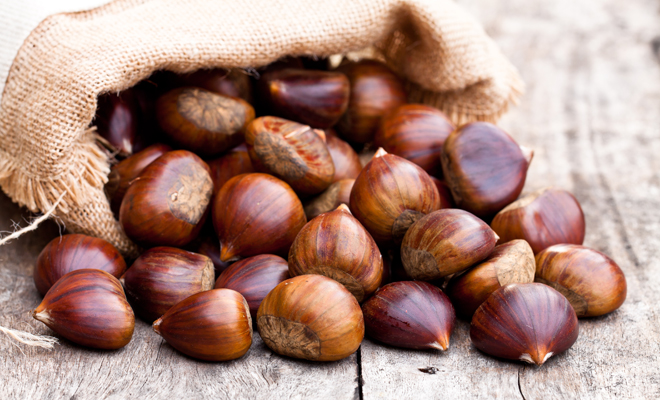With the arrival of winter, chestnuts invade supermarkets. Without a doubt, it is the best season to consume these fruits! And, luckily, we can still see quite a few street stalls that give us the chance to enjoy roasted chestnuts.
There are many benefits that they bring us and, although like everything, you have to eat them in moderation, the truth is that it is a real pleasure to be able to take them from time to time. Chestnuts are rich in phosphorus, calcium, iron, zinc, magnesium, they have B vitamins and folic acid. In addition, they also have high levels of fiber and carbohydrates.
If you are as passionate about these fruits as we are, in this article we bring you some tips for preserving chestnuts and being able to eat them beyond winter. Because… why are we going to settle for eating them only for a few months if we can enjoy them throughout the year? Aim, aim!

6 ways to preserve chestnuts to eat them throughout the year
If you are considering keeping chestnuts longer so that you can enjoy them for the rest of the year, take a look at these little and simple tricks:
1 In the fridge
Although this is a trick that will not allow you to keep the chestnuts throughout the year, it will help you to better distribute their duration in the event that you have many at home. In the cold of the refrigerator chestnuts can last up to a month. So, first, you can eat the ones you have out of the fridge (be careful! It is recommended that you take them out of the bag and put them in a basket with holes where the air can flow well). Then, those in the refrigerator and when that time passes, the rest that you will be able to keep with the tricks that you have below.
2 Vacuum
If you have a vacuum sealer, this is a really good option. You can keep them directly without peeling, putting them in a bag and making a vacuum.
3 In its juice
If you opt for this option, what you will need is to peel them and put them to boil (if some of them are more difficult to peel, don’t worry, after cooking you can do it without any problem). Afterwards, all you have to do is fill a jar with the chestnuts and the juice that they have formed when boiling, cover them well and put them upside down until they cool. Thus, you will be able to create a vacuum that will allow you to store them and keep them perfect for many months. Another alternative is to keep them in syrup, although doing so will take you a little more time and mess in the kitchen.
4 Freezing
Yes, chestnuts can be frozen. The best of all? They do not lose any of their properties when defrosting them. You have two options: peel them beforehand and freeze them without the skin, for example, in a freezer-safe bag or do it with the peel included. If you choose this last option, when they are frozen they will not stick together and you can take them individually. When you feel like eating them, you just have to take them out and let them thaw. However, if your plan is to roast them, you can do it directly even if they are frozen!
5 Dehydrated
For optimal results you will need a food dehydrator. If you have ever tried this device with, for example, fruit, you will see that the result is incredible. Of course, you must peel them and clean them well before doing so.
If, on the contrary, you do not have a dehydrator at home, you can also do it with a small oven blow. Crack the chestnuts first so they don’t burst and, once you take them out, let them dry with a piece of paper in a place without humidity.
6 Chestnut powder
One way to be able to eat chestnuts beyond winter is to make them powder. To do this, you will only need to grind them with a coffee or kitchen grinder.
Eating chestnuts throughout the year is going to be very easy from now on, right? Keeping them will not cost you anything and having them in periods when they are not typical will make you enjoy them twice as much. Yum!
